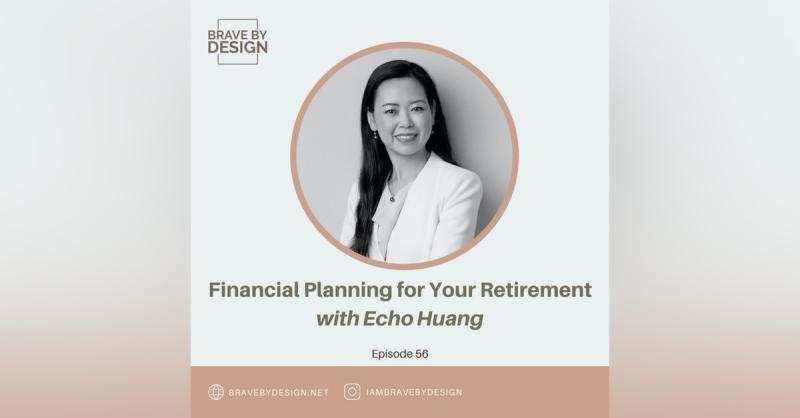It’s Your Estate—Don’t Procrastinate!
Nobody likes thinking about dying, or selecting a guardian to raise your children, or having to choose which of your children would best manage your money in your absence. But the critical point about estate planning is this: if you don’t do it, you lose your say. Without a will, your estate may end up in court, divvied up based on a judge’s decision—not your own.
Without specific terms set in place, you may not get the medical care you would prefer or the preferred custodial caretaker for your children. For those reasons, it is better to face the discomfort of our mortality and make sure everything is up to date and in order. With your estate planning checked off your list, you can rest assured that, in an unthinkable situation, you and your family will be covered.
So, where do you start?
Let the Decisions—and Paperwork—Begin
There will likely be many decisions you will have to make regarding your estate. Let's take a look at the primary documents you will need, which will guide you in making these decisions.
- A Will. Your will designates who will inherit or control your assets when you die. A will is vital if you have young children, as in it, you can detail the wishes for their future care. In your will, you can name guardians and name fiduciaries to act on your behalf, and you can name trustees to manage a trust. You can also name an executor to oversee your wishes. If you have specific property, art, or investments that you would like given to certain people, charities, or organizations, this is also the place to do that.
When putting your will together, it’s good to look over how much you have to live on. Do you have excess capital that you want to give away while still alive to save on taxes after death? If the idea of giving away assets while alive is uncomfortable for you, perhaps giving away future growth after death may be better. If you own a business, you should consider an exit strategy or a succession plan, especially if you have children. If you plan to give money to children or grandchildren, you may want to consider limiting or postponing access by putting it into a trust. If you decide to put gifts into trusts, you will also need to consider who would act as trustee(s).
The key here is that your will tells the court what your wishes are for your assets.
- Durable Power of Attorney. A power of attorney form is a document in which you authorize somebody to act on your behalf regarding financial decisions. This person is known as the attorney-in-fact. You can determine how much power the person will have over your financial affairs.
A “durable” power of attorney form is one that remains valid even if you become incompetent or incapacitated. You can design it to take effect immediately or stipulate that it only goes into effect when you become unable to make decisions for yourself. This is known as a “springing power of attorney."
If you were unable to manage yourself, your care, or your finances, a person close to you (often a spouse) would step in to act on your behalf. There are many reasons a spouse may not be the ideal person to take on this role, especially if they have health issues or other reasons that make them unfit. Often a child is then named for the role. The person granted power of attorney has a great deal of control in making choices for you and your assets, so choosing wisely and putting your wishes in writing is an excellent way to ensure your best interests down the line.
- Revocable Trust. In addition to having a will, some people use a revocable trust should they become unable to manage their affairs. The benefit of this setup is that creating and funding the trust avoids probate, which is the process by which your executors submit your will to a court to transfer assets to your beneficiaries. There are two major benefits of using a revocable trust: privacy and time & cost savings to settle your estate. If you do not want people to know how much assets your children would inherit from you and have a significant amount of probate assets (not in your retirement accounts and life insurance), consider setting up a revocable trust to hold these assets. Trust assets can be transferred to your beneficiaries effectively based on the trust agreement provisions. You can be the trustee for the revocable trust, and you can appoint another person or corporation to act on your behalf and manage the trust.
If you have a trust over $1 million, and you don't want your spouse or one child to be the successor trustee upon your death, consider naming a corporate trustee that can act professionally and follows your wishes precisely. This arrangement may reduce the conflicts and tensions among the child who has control and the other children.
After this trust document has been signed and executed, do not forget to change your ownership of assets from individual/joint to your revocable trust. I have seen many cases where an estate plan was not appropriately implemented by forgetting to retitle assets and/or change beneficiary designation forms for retirement accounts or life insurance.
- Health Care Directive. A health care directive, sometimes called a living will and power of attorney for health care, is a written document informing others of your health care wishes. It allows you to name a person (or “agent”) to make decisions for you if you are unable to do so. In most states, anyone eighteen or older can create a health care directive.
A health care directive is useful if you become unable to adequately communicate your health care wishes. The directive guides your physician, family, and friends regarding your care when you cannot provide that information. While you will still receive medical care without a health care directive, it will help you get precisely the care you would like, particularly near the end of your life when your interests may not be the same as those who survive you.
Before doing a health care directive, think about your goals, values, and preferences about healthcare, such as the type of treatment you do or do not want—for example, intubation or the use of feeding tubes. It would be best if you also considered whether you wish to donate organs, tissues, or body parts. You can also include wishes for funeral arrangements.
Without a health care directive in place, your doctor may provide you with medical treatments you may have otherwise refused. It is crucial to have a directive if there are disagreements within your family regarding how to proceed with care.
- Irrevocable Life Insurance Trust. If your current estate exceeds the estate exemption of $3.0 million in Minnesota in 2020 and your assets are projected to grow to over $11 million during your lifetime, consider placing your life insurance policies in an Irrevocable Life Insurance Trust (ILIT). An irrevocable life insurance trust allows your life insurance proceeds to be available to your loved ones, such as your spouse and children. It also gives you more control over your insurance policies and the money paid out from them.
This ILIT strategy’s benefit is that the death benefit will not be included in your or your spouses' taxable estate. In addition, if you have a taxable estate that is above the estate exemptions, the death benefit can be used to help your survivors pay income and estate taxes and/or day-to-day expenses immediately after your death. Your trustee would not have to sell investments during a potential stock market downturn within nine months of your death to pay the estate taxes due.
It is an unpleasant thing to think about but having your estate in order before something happens is critical. The essential benefit of end-of-life planning comes from knowing that your wishes will be fulfilled if you cannot voice them. There is security in knowing your family will be provided for if something happens to you.
The good thing about estate planning is that qualified professionals can help you navigate through the process. Their goal is to fulfill your end-of-life wishes thoroughly and legally. At my company, Echo Wealth Management, we review each client’s estate plan and coordinate with a trusted estate attorney to work on a relevant plan based on their current financial situation and projected wealth in the future. If you have questions about your estate plan, be sure to schedule a complimentary 30-minute Discovery Call. I’m licensed in all 50 states and work with clients both locally and virtually long distance.













